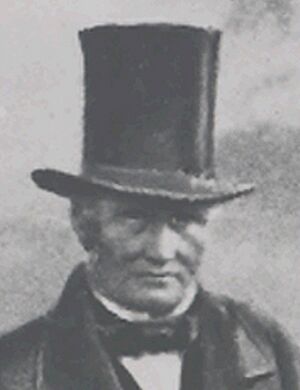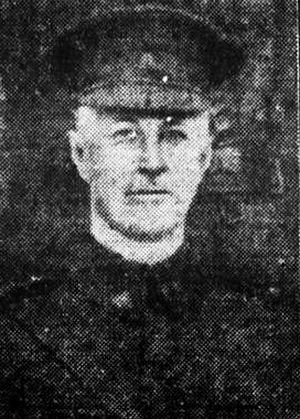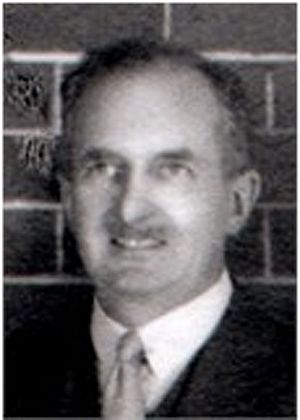The Hermitage, Denistone facts for kids
Quick facts for kids The Hermitage, Denistone |
|
|---|---|

The Hermitage, in Denistone
|
|
| Location | 1–13 Pennant Avenue, Denistone, City of Ryde, New South Wales, Australia |
| Built | 1838–1842 |
| Architect | John Bibb (possibly) |
| Official name: Hermitage and Garden; The Hermitage and Garden | |
| Type | State heritage (complex / group) |
| Designated | 2 April 1999 |
| Reference no. | 777 |
| Type | House |
| Category | Residential buildings (private) |
| Lua error in Module:Location_map at line 420: attempt to index field 'wikibase' (a nil value). | |
The Hermitage is a special old house in Denistone, New South Wales, Australia. It's listed on the heritage register, which means it's an important historical place. It was built between 1838 and 1842 and might have been designed by an architect named John Bibb. The house is also known as The Hermitage and Garden. Today, it is a private home.
Contents
A Look Back in Time
Early Days in Ryde
The area around Ryde was perfect for farming and growing fruit. In the early days, land was given to soldiers to encourage them to farm. Later, big landowners like John Macarthur bought many of these farms. The area stayed important for orchards throughout the 1800s.
The Blaxland Family Home
The Hermitage was built for John Blaxland between 1838 and 1842. John was the oldest son of Gregory Blaxland, a famous explorer of the Blue Mountains. The house was made from stone and clay bricks, which were made right there on the property!
John Blaxland was an important person in the community. He was a businessman and a member of the New South Wales Parliament for over 20 years. He and his wife, Ellen, had nine children who grew up in The Hermitage. The house had 12 rooms and wide verandahs all around. It also had a large farm with an orchard, a vineyard, and places for animals.
The Blaxland family had amazing views of the Parramatta River from their home. They were also very involved with St Anne's Church in Ryde. After John died in 1884, Ellen lived there for a few more years before moving to live with her daughter. The Hermitage property was later divided up and sold.
A Quiet Period
After Ellen Blaxland moved out, The Hermitage was mostly empty or rented out for a few years. In 1905, the land around the house was divided into smaller blocks and sold.
Professor James Pollock's Time
In 1910, a famous scientist named James Arthur Pollock bought The Hermitage. He was a physics professor at the University of Sydney. He lived there with his unmarried sister, Annie.
During World War I, even though he was 51, James joined the army. He helped design equipment for tunnellers in France. After the war, he returned to his university work. The house was quite big for him, so he decided to sell it. He passed away in 1922. His sister Annie left money to the University of Sydney to support physics research, in memory of her brother.
The Lively Nicholson Family
In 1923, Theo and Elinor Nicholson bought The Hermitage. They had six children, and five of them were born in the house! The Nicholson family was very religious and even ran a Sunday School at The Hermitage for local children. The house became a lively place, full of family, friends, and visitors.
One of their daughters, Dr Catherine Hamlin, became very famous for her amazing work helping women in Ethiopia. She wrote a book about her life and shared some memories of growing up at The Hermitage:
When I was a child the house seemed huge with endless rooms and a big attic in which we could crawl about and play with all the old junk that had accumulated over the years. There were eight bedrooms. The upstairs attic rooms were rather poky, but my father had gable windows put in and then we had a beautiful view all the way down to the Parramatta River. Downstairs the rooms were wood panelled and there were wide verandahs in the front and back of the house. The garden was my mother’s special interest and delight. It was beautiful and, to me the most perfect garden I have ever been in..
Her brother, Peter Nicholson, also shared his memories. He said the property had orchards and vegetable gardens. The family kept chickens for eggs and even had a cow for milk! Tradespeople like the butcher and baker would deliver goods to their door. The children had a playroom upstairs, and the family enjoyed playing tennis on their court. Elinor Nicholson loved gardening and had a beautiful, elaborate garden with a full-time gardener.
The Sunday School grew so big that the family built a separate hall on Pennant Avenue. When the property was later sold, this hall was moved and became part of a church in East Denistone.
CSIRO's Research Years
In 1952, the Australian Government bought The Hermitage for the Commonwealth Scientific and Industrial Research Organisation (CSIRO). This is a group that does scientific research. They used the house as a laboratory for wool textiles research.
The CSIRO made many changes to the house and grounds. They added laboratories, built new buildings, and removed things like the tennis court and old sheds. For example, the timber columns on the front verandah were replaced with stone ones, and the attic was turned into a lab.
The CSIRO stayed at The Hermitage until 1996. After that, the property was sold back to private owners. Between 2001 and 2012, a lot of work was done to restore the house and gardens to how they looked before the CSIRO moved in. Today, The Hermitage is a private family home once again.
About The Hermitage
The Hermitage property is quite large, covering about 1.44 hectares (about 3.5 acres).
The Grounds
South of the house, you can still see parts of the old garden, including the original gravel driveway and some very old trees. The spot where the house's well used to be is in the middle of the back courtyard. From the garden, there are wide views over Ryde and Parramatta.
The House
The Hermitage is a great example of an Australian colonial house from the early Victorian period. It's a single-story home with a hipped roof (a roof that slopes on all sides) and wide verandahs. The front and side verandahs are paved with sandstone. The house has sandstone foundations and brick walls. The bricks were made on site!
The building has three main parts: the main house, and two side sections called the east and west wings. The inside of the house still has many original features like doors, wooden details, and staircases.
Condition of the House
The Hermitage is in good physical condition. While the garden and surrounding land have changed a lot over the years, there might still be old things buried underground from its early days. The house itself shows changes from different periods of its history.
Changes Over Time
The Hermitage has been changed and updated many times since it was built:
- 1838–1842: Built with bricks made on site. It had 12 rooms and verandahs.
- Around 1860–1875: Two bedrooms were added to the east side, and a stable wing was built. The farm was improved with a vineyard, orchard, and animal pens.
- 1911: Major changes were made, including adding a second staircase to the attic and new French doors.
- 1922–1952 (Nicholson family): The attic was extended, bathrooms were added, and the garden was changed a lot with new trees and a tennis court. A separate hall was built for the Sunday School.
- 1952–1996 (CSIRO): The house was turned into a research lab. Timber columns were replaced, laboratories were installed, and many new buildings were added to the property.
- 2001–2012: After CSIRO left, restoration work began to bring the house back to its earlier appearance.
Why The Hermitage is Special
The Hermitage is a rare and important example of an early Australian colonial house. It's special for many reasons:
- History: It's linked to the famous Blaxland family, who were pioneers in New South Wales. It also shows how wealthy families created large estates from smaller farms.
- Design: It's a great example of early Victorian-era Australian house design. It might even be one of the few surviving homes designed by the architect John Bibb.
- Location: The house is a noticeable landmark in the landscape near the Parramatta River.
- Archaeology: The land around the house might still hold clues about how people lived and worked on large colonial estates long ago.
- Rare Plants: The garden has a very rare plant called Bauhinia leichardtii, which is one of only two known in the Sydney area.
The Hermitage and its garden were officially listed on the New South Wales State Heritage Register on April 2, 1999, because of its important history and unique features.
Gallery








